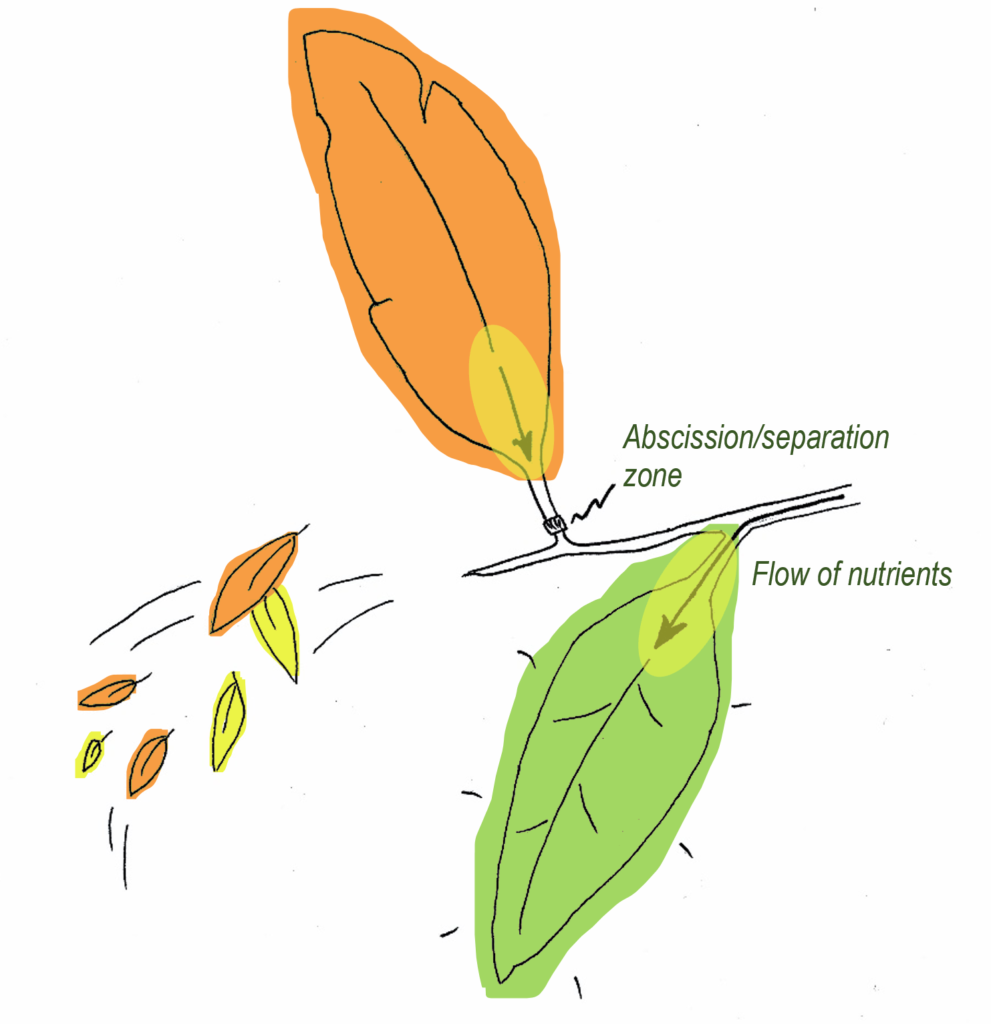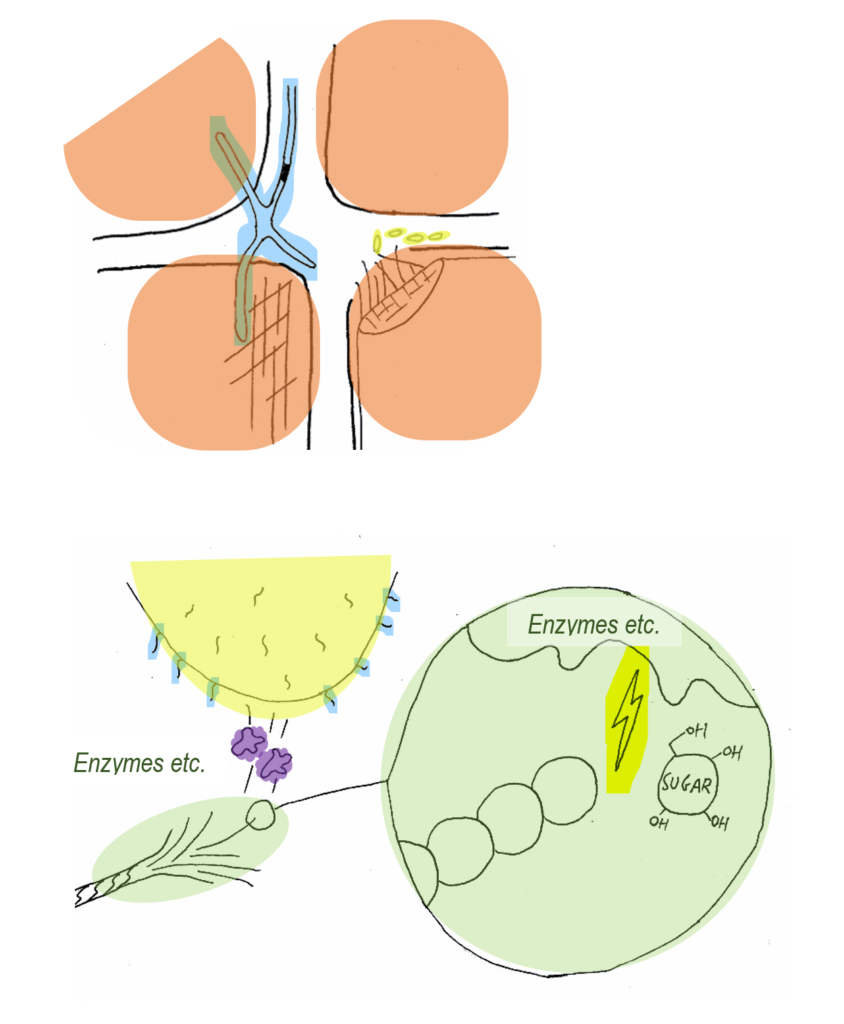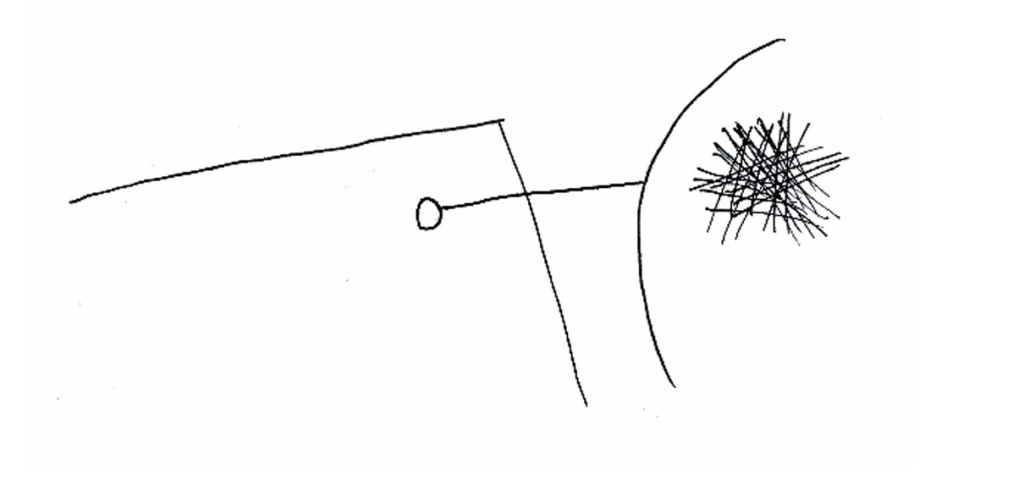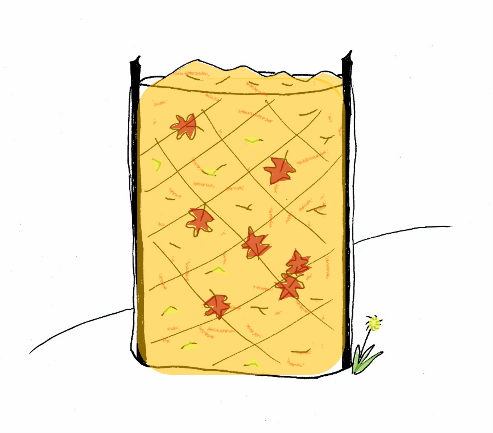Our Main aim at Capital Scraps is to rescue as many kitchen scraps Canberra-wide as possible. By composting these the right way, we can avoid the generation of landfill gas (mostly methane) and move towards a cleaner ‘municipal waste stream’ to help support the circular economy. But you can’t make compost from food scraps alone. They are too nitrogen rich, and full of water also. So, we need to balance them out with a ‘carbon feedstock’. This just means mixing the food scraps with materials higher in carbon, to balance the carbon to nitrogen ratio. There are a few things that we can use but Autumn leaves are our favourite for many reasons.
Autumn leaves are materially different to growing, green leaves. While the leaf is still growing and photosynthesizing it contains all the structures and elements it needs to keep it healthy and active (in a metabolism sense). But during Autumn, various environmental cues trigger a genetically controlled program in the leaves called leaf senescence. This process is a dismantling process, where nutrients are drawn back from the leaf. At the same time a specialised structure called an abscission/separation zone forms at the base of the leaf. This little collar tightens around the leaf stalk (petiole) until eventually the leaf snaps off and is easily removed from the rest of the tree by a light breeze. The aim of this coordinated program of events is to shut down the tree to protect it during harsh winter weather. The result is leaves falling from the tree mostly contain structural material and the tree takes back what it can in the way of nutrients first. Autumn leaves are primed for degradation! The tree has already started the process for us.

At a cellular level, vigorously living plant cells are a hive of activity. There is a nice big water vacuole to keep the cells plump and fresh, there is gene transcription, proteins shuttling micronutrients around, chloroplasts and mitochondria feeding the cell and lots more besides. In a senescent leaf all of these activities are halted and the cellular machinery is dismantled so that the nitrogen and micronutrients can be salvaged before winter shut down. The cell membranes holding everything in place (including that large water store in the vacuole) become compromised and rather than a buzzing microfactory things start to resemble some sort of primordial soup.

As the cells are no longer fully alive, they now also become vulnerable to attack from microorganisms. (When is the leaf no longer alive? as soon as it detaches from the tree? when the last chloroplast or mitochondria fires off some energy? a philosophical question for another time!). Microbes everywhere, all the time and they will take advantage of any compromised structures and work their way inside the leaf. That’s not a bad thing, they have a job to do!
The cell walls that contain the plant cells contain a few different materials but predominantly they are composed of cellulose. Some microbes have the correct equipment to break through the strong, mesh-like arrangement of the cellulose fibres that surround the old cells. Others will take advantage of frayed fibres where the cellulose is easier to get to. It’s a physical as well as a chemical problem, let alone the biochemistry at play in the form of enzymes and other ‘protein-based machines’ that the microbes use to get the job done. But why are the microbes attracted to the cellulose in the first place?
Cellulose, the world’s most abundant polymer, is all around us in the form of paper, cotton fabric and other useful goods. Being a polymer means that it is made up of monomers, a repeating sequence of smaller items that are strung together like a bead necklace. In the case of cellulose, the monomer in question is another familiar chemical, glucose. Glucose is a simple sugar and a favourite food of just about all life forms. If you recall from high school science, glucose is what drives the generation of ATP in our cells (and in plants, and animals, and bacteria, and fungi etc.), it’s our energy source that keeps us going.Bacteria and fungi therefore love cellulose, especially when they have the equipment (enzymes etc) to turn it into glucose, or they associate with those that have this equipment. Cellulose in your compost heap will keep the population of microorganisms energetic and happily reproducing and metabolising all the other goodies. It is all this activity that makes a hot compost heap hot.

A note on paper in the compost heap: Why do we prefer leaves to paper as our carbon feedstock? While paper consists of 99% cellulose and might seem ideal to therefore supply plenty of glucose to keep the microbes going, the physical structure of paper makes the cellulose harder to access. Leaves have microscopic gaps in between the old plant cell walls. Paper on the other hand has been made pretty strong by us by meshing the cellulose fibres together in a way that makes them harder to access, even by nanoscopic enzymes. Autumn leaves in our compost system will be break down, and therefore supply a steady stream of glucose, more quickly than paper.

Cellulose is an amazing natural material because not only is it a source of life-giving glucose, at the same time it is relatively inert. A thriving compost heap is a very dynamic community, with tens of thousands of species competing and sharing resources. Yup, that’s right, tens of thousands of distinct types of life all with slightly different requirements. Luckily for them, food scraps also present a fair bit of variety in terms of the chemical makeup and structural factors. Providing cellulose rich materials like Autumn leaves or paper provides a place for life away from the chaos of degradation with various acids and more reactive chemicals being produced and shuttled around, it can be a refuge. The structural aspect of providing air spaces in between other materials is also key. Aerobic metabolism is the aim in a healthy compost heap, avoiding the generation of methane and other climate damaging (and stinky) gases but also for much more efficient degradation (aka ready to use compost quicker!).
All of this is to say that we get excited in Autumn with all the freely available feedstock lying around. It’s an effort to rake large quantities of it up but then we can store the leaves for year-round use. Oak leaves that have sat out in the weather for months are perfect for composting come Spring or Summer when we might struggle to find enough carbon materials otherwise. That’s why we install simple leaf towers, to neatly pile up Autumn leaves and store them till we need them. As a bonus, we’re removing leaves that might otherwise have ended up in our waterways, which contribute to the problem of eutrophication. So many wins!

